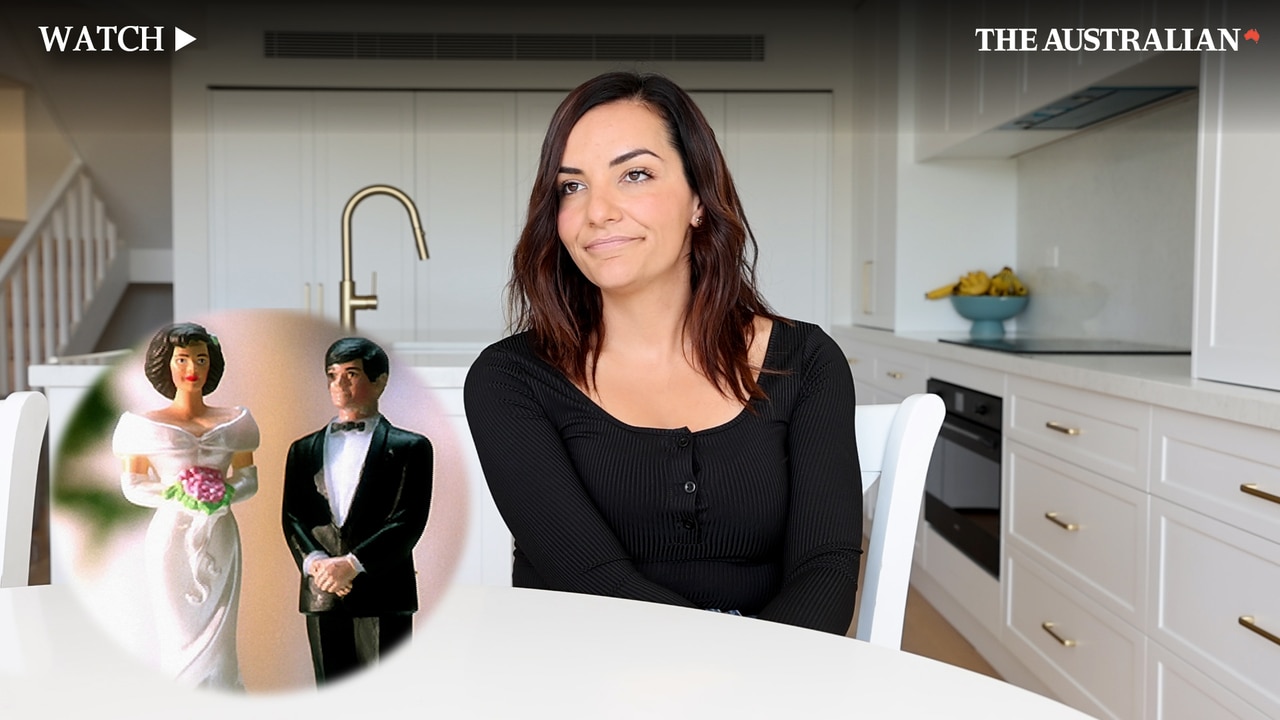How to divorce without breaking the bank
Lawyers are usually the only winners in divorce. But a separation that minimises emotional and financial costs is not impossible. Here’s how.

The kitchen table. A place where meals are shared, conversations unfold, and families bond. It’s where kids do homework, holiday dinners become traditions and decisions are made.
But when a relationship begins to fall apart, the kitchen table becomes less of a gathering spot and more of a reminder of what’s missing. The laughter fades, and what once felt like a space for connection turns into one of distance. Eventually, meetings may stop all together. When it’s time to face the end of a marriage, the question is: how do you move forward?
Perhaps the answer is to return to the kitchen table – this time, to figure out the next stage together. And, hopefully, without getting the lawyers involved.
A divorce that minimises emotional and financial costs is difficult, but not impossible, says Melbourne mum Tharaa Fayad.
She and her husband split in 2022 after 11 years of marriage. After initially separating and moving into different houses, she made the call to divorce.

“There were lots of emotions, anger, and I felt like my life had opened up Pandora’s Box,” she tells Inquirer. “You just don’t know where your life is heading anymore.”
At the time of the separation, she and her husband had two investment properties and were trying to set up a retirement plan. They had just bought a home in a good high school zone for their eldest daughter.
“My main plan was obviously to divide everything as fairly as possible, but without getting rid of everything we had worked so hard for,” she says. “That was our focus.”
That focus is common for nearly all Australian couples who split on amicable terms. They want to get out unscathed, with a fair share of assets, and – in instances where children are involved – in a manner that allows for healthy co-parenting.
It’s a tall order, especially when feelings are at their all-time high. Many who have been through it will tell you they hardly recognised their partner come the end of the legal process. It’s tense, it’s competitive and it’s deeply, deeply emotional. For these reasons, it is sometimes wise to get a lawyer involved.
A third party to help temper anxieties and keep things completely professional could help keep things on track, and ensure things go your way. But on the other hand, it can create distance between partners, and an invisible wall that blocks collaboration and healthy negotiation.
When you look at the statistics of how divorces conclude, more and more couples are opting to avoid lawyers until the absolute last moment. In fact, nearly 90 per cent of divorce applications are settled before a judge needs to make a call.
“A lot more people come to me where they have been capable of having a kitchen table conversation,” Mills Oakley family law partner Susan Warda says.
“They say, this is what we’ve agreed to. Here’s our spreadsheet. Here’s the paperwork the accountant’s given us. We just want you to document it so it’s legally binding.”
It’s great in theory, but in practice it can be more difficult. Warda recommends total transparency between partners to ensure no one is left short changed.
A lawyer’s tips for a kitchen table divorce
Asked for her top tips on how to conduct a kitchen table divorce, she says: “Be transparent with the information they provide to each other, so they can both have good conversations knowing everything about their assets.
“It’s very hard for one person to have that conversation if there isn’t a level playing field,” she says. “If one person has always managed the family finances and the other person hasn’t, you really need to almost have an education process to bring them up to speed so they get some idea of ‘Well, this is what our house is worth’.”
She also recommended couples “talk about what you both hope for”.
“Most people want to try and keep their kids in the same area, their kids at the same school, and it’s hard to do that,” she says. “They have to think creatively and be open to different ideas. When people can have those conversations with each other, and if they have an accountant who they trust … they can make really informed decisions where often they can go and see a lawyer to just confirm, does this all look OK?”
In Australia, it is possible to conduct a divorce without lawyers entirely, Warda says. Either you cannot document it – which “has some danger to it” – or you can lodge an application for consent orders in the Federal Circuit and Family Court, where neither party has to be represented.
“That is certainly a process that’s available. What happens though often is it’s a complicated process because you’ve got to draft your own consent orders, so often they find that they get requisitioned or knocked back because they might have drafted orders that aren’t enforceable,” she says.
Thaara Fayad estimates her divorce cost about $4500 in total, including minor legal fees to offer some advice, a light mediation, and a binding financial agreement relating to ongoing mortgage repayments on the family home.
While it wasn’t strictly handled around the kitchen table, she says all negotiations were done directly between herself and her ex-husband, with an initial steer coming from means-tested mediators and lawyers to offer sprinklings of advice.
“I wanted to keep the family home until a certain point, which meant I wanted to cover the interest on the mortgage and he would get his money in advance (a part of it) and then the rest at the sale of the home,” she says.
“But then it became very evident that both of us didn’t really fully trust one another to keep that scenario going for a year and a half. I thought it was only fair so that we both kind of felt safe with the agreement we had come to – when it’s mediation they can write it all down for you, but it’s not financially binding, whereas with a binding financial agreement, if you want to contest anything in there, you need to take it back through the courts.”
She said mediation helped them come to a fair asset percentage split, and then it was up to them to do the rest.
“I made WhatsApp groups between me and him on every single matter,” she says. “So for example, for our property … (the group was called) ‘Sale of Hadfield’.”
Fayad says it’s important to “let the emotions settle” in order to ensure things remain amicable.
“There’s no rush to splitting the asset pool right away,” she says. “Obviously, in different scenarios, there may be, if gambling or something came into it. But there’s no real urgency in having that split. Let the emotion settle and then treat it like a business transaction.”
Before everything, however, she says “focus on your children’s needs”.
“If you can just keep the focus on the kids and what’s best for the kids and try and take the emotion of the relationship out of it, I think that would be my biggest (piece of) advice,” she says.
“I’ve spoken to so many people going through something similar. All you need to do is just focus your energy on the kids. The anger can be dealt with later.”
Often clients spend more money than they need to, Warda says. They don’t realise that every phone call is a transaction a lawyer can charge for.
“Some clients don’t appreciate that if they’re ringing you every day and making appointments to see you every week, that increases their costs and it’s not always necessary,” she says.
“I give them a brochure right at the outset on how to minimise your legal costs so that then they can have some control over that process and understand ‘if I go and see the lawyer every week for an hour and I’m having half an hour conversations with them, I’m getting charged for it. I can probably do it more effectively by asking six questions in one call rather than ringing daily’.”
She encourages clients towards “collaborative family law” – a process growing in popularity in which clients and their lawyers agree to work together to find a fair solution without involving the court.
“(It’s) where the husband and wife decide they want to sign a contract to not go to court, no matter what happens in their negotiations, and they find collaboratively trained family lawyers who sign the contract with them,” she says.
“If either the husband or the wife decide to terminate the collaboration and say, ‘no, I want to go to court because we’re not reaching any agreement’, those two lawyers aren’t then allowed to act for them.
“The fundamental difference about why collaborative family law is so effective is because the lawyers are as committed as the husband and wife to not go to court, because obviously they don’t want to lose a client.”




To join the conversation, please log in. Don't have an account? Register
Join the conversation, you are commenting as Logout